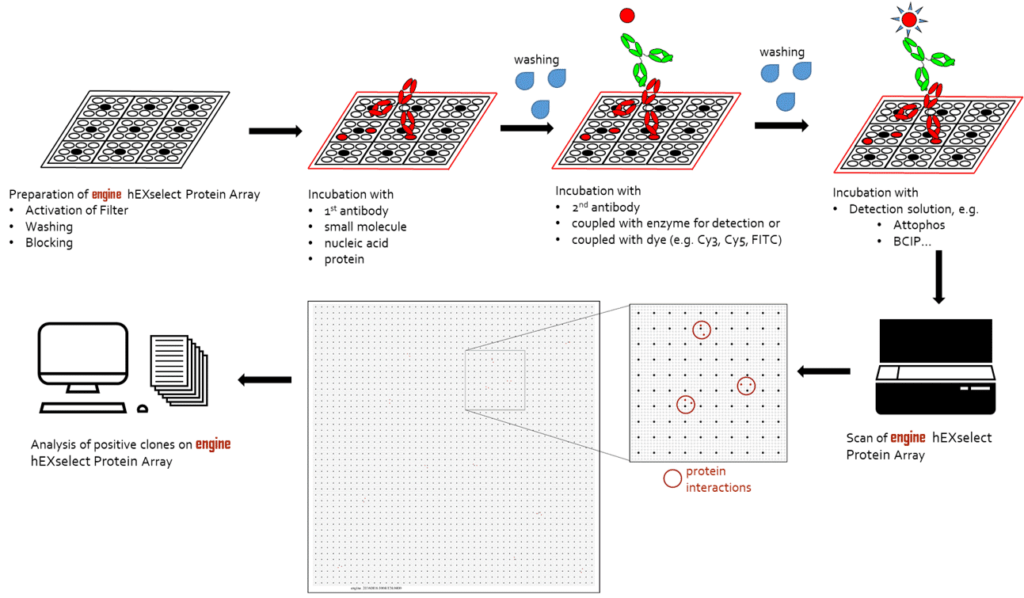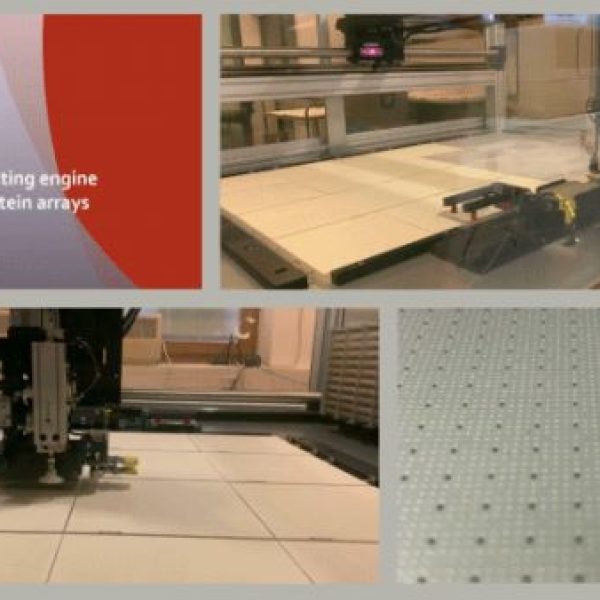Take a look at our lab!
In this post, we take a look inside our lab and show you how our protein arrays are made. The heart of our protein array technology is our robot. And like every beloved piece of laboratory equipment, we have named it: Baloo
Our Protein Arrays
We offer different types of protein arrays wich present over 15.000 human proteins and peptides derived from different tissues based on a human fetal brain, T‑cells, lung and colon cDNA libaries. Our engine arrays based on the protein array technology of Source Biosciences, imaGenes and RZPD.
Besides our costumized arrays we also offer our 22x22 cm protein array hEXselect (product no. 1003) and UniPEx (product no. 1008). The following video shows you how we manufacture these.
How to create engine protein arrays

By loading the video, you agree to YouTube’s privacy policy.
Learn more
- Roboter arm picking up a microtiter plate, containing 384 individual E. coli clones of a cDNA expression library from the hotel.
- Plate cover is lifted off automatically.
- The gadget, consisting of 384 steel needles, carefully stirs the E. coli clones.
- Clones are spotted onto the PVDF membrane.
- After spotting, the PVDF membranes are placed on agar plates and E. coli clones are grown over night and protein expression is induced.
How to use our arrays
After the arrays are produced, they can be easily stored at room temperature and shipped worldwide. You need only 50 µl sample, variouse matrix is possible, e.g. serum, CSF or cell supernatant. The incubation sheme is as simple as a Western Blot.
- Rehydration of array (PDVF membrane)
- Removal of E. coli debris
- Washing
- Blocking
- Incubation with sample
- Washing
- Incubation with secondary antibody
- Detection with substrate
- Software-based evaluation
Discover novel Biomaker
Our protein array technology is unbiased and hypothesis-free, so you get a high discovery power to detect novel biomarkers and allows an objective analysis of causal disease-correlations. You can identify disease-related associations and compare sera, CSF or cell supernatants – as desired, from patient or diseases groups, controls or healthy individuals.

